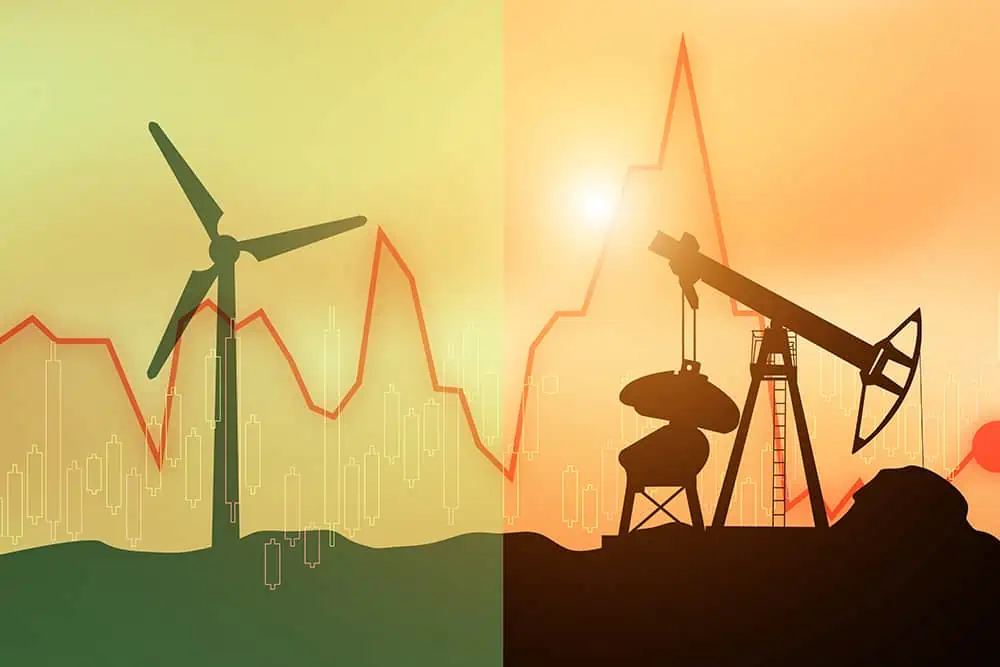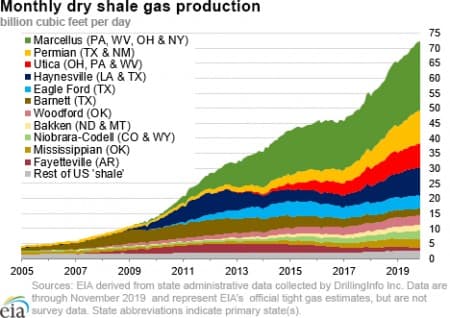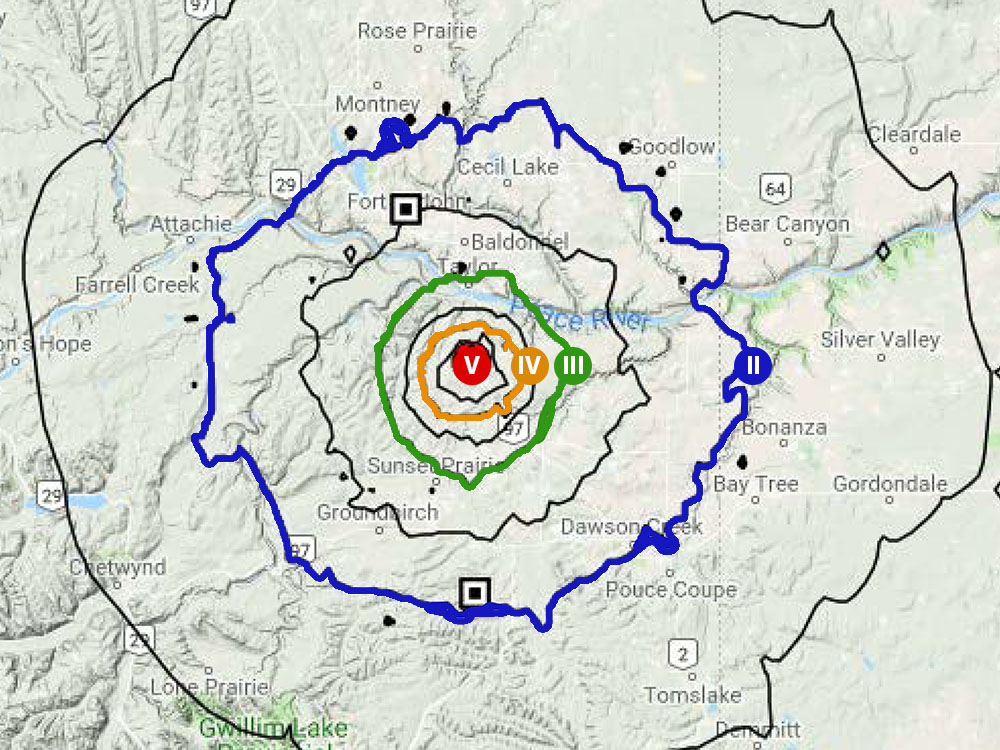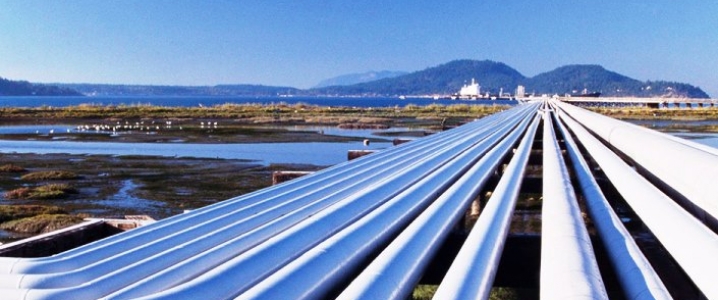The United States is the biggest producer of natural gas in the world and recently became the largest exporter of LNG. The industry is scrambling to build LNG (liquefied natural gas) export terminals as fast as permitting and funding will allow.
This couldn’t come at a worse time. Instead of having an almost infinite amount of natural gas as many believe, we may be witnessing hard limits to that supply.
Figure 1 shows that shale gas plays have reached an apparent peak and may be starting to decline. It’s not a good sign although some of this may be related to seasonal effects or regulatory matters. At the very least, the rate of production growth is slowing.

Any decrease in the growth of shale gas could become an acute problem because it accounts for 82% of U.S. dry gas production (Figure 2).

I am frankly less concerned about whether or not shale gas production is currently in decline as I am about what will happen to supply in five or ten years.
That concern is based on plans for increased LNG and pipeline exports. Net LNG exports are expected to increase +6.4 bcf/d by 2030 & another +7.1 bcf/d by 2035 (Figure 3). Total net exports are projected to increase +15 bcf/d by 2035 from 13 to 29 bcf/d.

Let’s take a quick look at production from the three biggest pure shale gas plays (Figure 4).
…click on the above link to read the rest…


















